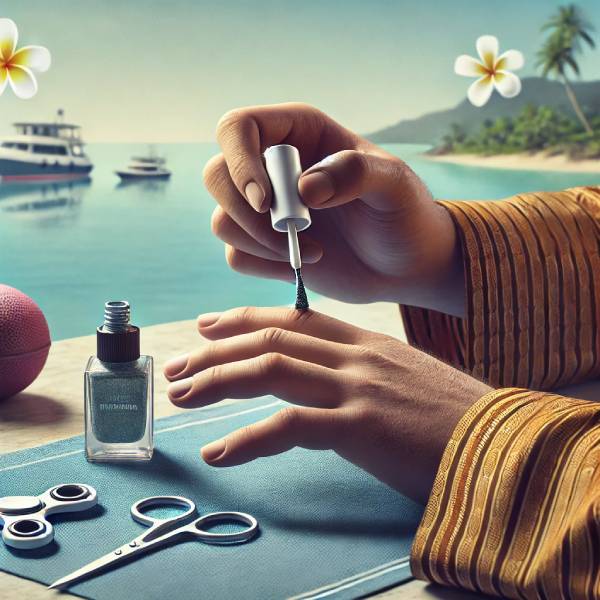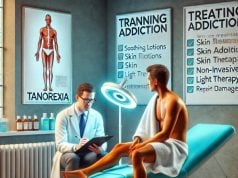You promise yourself—this time you’ll stop. Yet an email alert dings, a traffic light lingers on red, or a show hits a tense scene, and suddenly your fingertip is back between your teeth. Moments later ragged edges sting against fabric, cuticles bleed, and a familiar wave of frustration rolls in. Chronic nail biting—clinically named onychophagia—is far more than a bad habit; it’s a body-focused repetitive behavior that can scar skin, spread infection, and erode self-confidence. This guide unpacks why the urge grips so tight, how to spot danger signs early, and—most importantly—how to break free with evidence-based tools and compassionate self-care.
Table of Contents
- Prevalence and Habitual Landscape
- Roots, Triggers, and Predispositions
- Recognizing Patterns, Signs, and Diagnostic Approach
- Physical Repercussions and Psychosocial Impact
- Intervention Strategies and Pathways to Freedom
- Frequently Asked Questions
Prevalence and Habitual Landscape
How common is nail biting—and when does it cross the line?
- Childhood peaks: Up to 45 percent of children gnaw their nails occasionally. Many outgrow it by late teens as social awareness sharpens.
- Adult persistence: Roughly 15 percent of adults still indulge regularly; for 5 percent it escalates into compulsive onychophagia with tissue damage or functional impairment.
- Gender spread: Research shows near-equal rates among males and females in youth. Adult women often seek help more, likely due to cosmetic concerns and salon culture.
- Context matters: Brief nibbling during exams or sports finals is common. Addiction is flagged when biting consumes significant time, causes bleeding, infection, pain, or distress, or when repeated attempts to quit fail.
Societal perceptions and hidden toll
While smoking or alcohol misuse trigger swift concern, onychophagia is frequently dismissed as harmless. Yet HR managers quietly note chewed nails in interviews (perceived anxiety), and healthcare data reveal surprising costs: antibiotic prescriptions for paronychia, dental repairs, and even jaw-joint disorders from chronic clenching.
Digital age amplification
Smartphones keep hands idle near the mouth, scrolling stress spikes micro-anxieties, and video bingeing removes awareness of time. Combined, these modern habits extend biting sessions unnoticed.
Roots, Triggers, and Predispositions
Neurobiological scaffolding
| Aspect | What we know | Implication |
|---|---|---|
| Dopamine reward loop | Microscopic pain plus sensory feedback releases small dopamine bursts. | Reinforces behavior like a slot-machine “win.” |
| Cortico-striato-thalamo-cortical circuit | Shared with OCD and tic disorders; heightened activation when resisting urges. | Explains intrusive cravings at boredom or stress peaks. |
| Genetic threads | Twin studies suggest 30–50 percent heritability; overlapping genes with trichotillomania. | Family history signals higher vigilance need. |
Psychological springboards
- Anxiety and perfectionism: Nail biting offers momentary tension release and “trims” imperfections, feeding a tidy-up loop.
- Attention modulation: For some with ADHD, nibbling grounds focus during passive tasks (lectures, meetings).
- Sensory seeking: Individuals with sensory processing sensitivity may enjoy nail texture or cuticle ridges, reinforcing the cycle.
Environmental spark-points
- Boredom pockets (traffic jams, ads before videos)
- Performance stressors (public speaking, exams, gaming ranked matches)
- Sensory cues (jagged edge, hangnail, or dry skin)
- Modeling and mimicry (parents or peers biting in childhood normalize the behavior)
Comorbid terrain
Onychophagia frequently co-travels with:
- Trichotillomania (hair pulling)
- Dermatillomania (skin picking)
- OCD-spectrum rituals
- Generalized anxiety or panic disorder
Recognizing overlapping disorders guides integrated treatment.
Recognizing Patterns, Signs, and Diagnostic Approach
Behavior mapping
Habit diaries reveal timing, emotion, location, and antecedents. Track for two weeks:
- When? (morning commute, Netflix binge)
- Where? (sofa, office desk, bed)
- Feeling? (bored, restless, pressured)
- Awareness? (automatic vs. deliberate)
Patterns often expose “hot spots” you can target with barriers or alternate actions.
Physical and dental clues
| Area | Early sign | Advanced damage |
|---|---|---|
| Nails | Ragged free edges, white spots | Hyponychia (shortened nail), pterygium, permanent matrix injury |
| Cuticles | Minor hangnails | Painful paronychia infections, swelling, pus |
| Teeth | Micro-chips on incisors | Crown fractures, malocclusion, TMJ pain |
| Skin | Red fingertip borders | Hypertrophic scarring, warts spread by open portals |
Diagnostic frameworks
- DSM-5-TR lists onychophagia under “Other specified obsessive-compulsive and related disorders.”
- Modified Yale Global Tic Severity Scale (MYGTS-BFRB) quantifies urge intensity, control, and functional impairment—useful for baseline and progress.
- Rule-out checks: Ensure no iron-deficiency anemia or nutrient disorders driving pica-like behaviors.
Severity staging quick guide
- Mild: Cosmetic concern, no pain.
- Moderate: Occasional bleeding, embarrassment, but retains control during key events.
- Severe: Daily episodes, infections, work interference, failed quit attempts.
Physical Repercussions and Psychosocial Impact
Beyond ragged tips—body-wide effects
- Oral health: Bacteria transfer increases cavity risk; constant enamel friction accelerates erosion.
- Gastrointestinal upset: Swallowed nail fragments can irritate stomach lining, rarely forming bezoars.
- Dermatologic infections: Staphylococcus aureus thrives in moist nail folds; repeated abscesses may require surgical drainage.
- Musculoskeletal strain: Chronic jaw tension fosters headaches and temporomandibular joint syndrome.
Emotional ripple
Shame spiral—people hide hands in photos, skip manicures, or avoid handshake-heavy networking, stalling careers and social growth. Teens face bullying; adults fear handshake judgment in interviews. Poor self-image fuels anxiety, which ironically magnifies biting urges.
Financial and systemic costs
- Antibiotics, dental repairs, dermatology visits accumulate.
- Workplace productivity dips when pain distracts typing or instrument playing.
- Public healthcare systems bear costs for preventable infections and oral surgeries.
Quick tip: If pain flares, soak fingertips in warm saltwater twice daily. Reduces swelling and bacterial load while reinforcing mindful care rituals.
Intervention Strategies and Pathways to Freedom
Habit-Focused Behavioral Therapies
| Approach | Core techniques | Suitability |
|---|---|---|
| Habit Reversal Training (HRT) | Awareness training → competing response (e.g., fist clench) → social support → relaxation. | Gold standard; >50 % achieve significant reduction after 8–12 sessions. |
| Stimulus Control (SC) | Modify environment—gloves, bitter polish, file in pocket—to disrupt cues. | Effective for mild–moderate cases; pairs well with HRT. |
| Comprehensive Behavioral Model (ComB) | Tailors five domains (sensory, cognitive, affective, motor, place) to create multi-tool plan. | Helpful when single-strategy attempts failed. |
| Acceptance & Commitment Therapy (ACT-BFRB) | Mindfulness of urges, values-guided action. | Reduces struggle with cravings; complements HRT. |
Cognitive and Pharmacological Adjuncts
- SSRIs (fluoxetine, sertraline) for comorbid OCD or anxiety; may lower urge frequency indirectly.
- N-Acetylcysteine (NAC) 1,200–2,400 mg/day shows promise in trichotillomania trials; limited nail-biting data but early case reports encouraging.
- Topical bitter agents (denatonium benzoate varnish) create immediate aversive feedback—best as part of broader plan, not stand-alone.
- Glove therapy using light cotton or silicone finger caps at high-risk times (TV, commute) interrupts automatic loop and protects healing tissue.
Tech-powered solutions
- Smart bracelets (Keen, Pavlok) vibrate when hand nears face, boosting awareness.
- Mindfulness apps with urge logging and guided breathing break the autopilot.
- Blue-light timers reduce late-night phone scrolling, a common bite trigger.
Occupational and school strategies
- Fidget tool swap: Replace biting with therapy putty, worry stone, or chewable jewelry for sensory satisfaction.
- Desk nudges: Post-it with “Hands Down” prompt or small mirror to increase visual feedback.
- Peer accountability: Classmate or coworker hand-signal when you drift to nails—use humor, not shaming.
Nutritional and lifestyle pillars
- Hydration & cuticle care: Dry hangnails spark biting; apply cuticle oil twice daily, drink 2 L water.
- Protein, biotin, zinc: Support faster nail regrowth, making progress visible—powerful motivator.
- Stress-management bundle: 150 min weekly exercise, 10-minute nightly journaling, and diaphragmatic breathing cut baseline anxiety.
Step-by-step 30-Day Break-Free Plan
| Week | Milestone | Key Actions |
|---|---|---|
| 1 | Awareness ignition | Habit diary; photo baseline; start bitter polish. |
| 2 | Competing muscle | Learn HRT fist-clench + chew sugar-free gum during triggers. |
| 3 | Environment reshape | Finger caps at Netflix, file rough edges immediately, phone-time glove. |
| 4 | Reward & reflect | Celebrate 7 bite-free days with manicure or new game; adjust plan using diary insights. |
Relapse-prevention framework
- Trigger catalog update monthly—stressors evolve.
- Travel kit: mini-file, cuticle oil, fidget ring; keep in bag.
- Self-compassion mantra: “Slips happen; refocus, don’t punish.”
- Quarterly photo log to visually reinforce nail health progress.
- Community share: Online BFRB forums or local therapy alumni groups keep motivation fresh.
Success metrics
- Bleeding episodes drop to zero.
- Urge intensity self-rated <3/10 most days.
- Nail length >2 mm free edge on all digits.
- Anxiety scale reduction ≥30 percent if comorbid.
Achieving and maintaining these for three consecutive months signals solid recovery.
Frequently Asked Questions
Is nail biting really an addiction or just a habit?
When behavior turns repetitive, hard to control, and causes harm or distress, clinicians classify it as a body-focused repetitive behavior—similar to behavioral addiction due to its compulsive nature.
Will my nails grow back normal after years of biting?
Matrix cells can heal; most people see healthy regrowth within 3–6 months of abstinence. Severe long-term biting may shorten nail beds, but appearance still improves significantly.
Are bitter nail polishes enough to stop on their own?
They help but rarely solve deep-rooted onychophagia. Pair with habit-reversal techniques, stress management, and cuticle care for lasting change.
Does chewing gum help reduce nail biting?
Yes—gum keeps mouth busy and provides oral sensory input. Choose sugar-free varieties and combine with awareness training for best effect.
Can children outgrow nail biting without treatment?
Many do, but if chewing causes pain, infections, or embarrassment, early behavioral guidance prevents entrenchment into adulthood.
Is onychophagia linked to worms or vitamin deficiency?
No evidence supports that. While nutrient deficits can weaken nails, biting stems from behavioral and psychological factors, not parasite cravings.
Disclaimer
This article serves educational purposes only and should not substitute professional medical or psychological advice. Always consult qualified health-care providers for diagnosis and individualized treatment.
If you found this guide helpful, please share it on Facebook, X (formerly Twitter), or any platform you enjoy—and follow us for more science-backed wellness content. Your support helps us continue creating high-quality resources—thank you!











